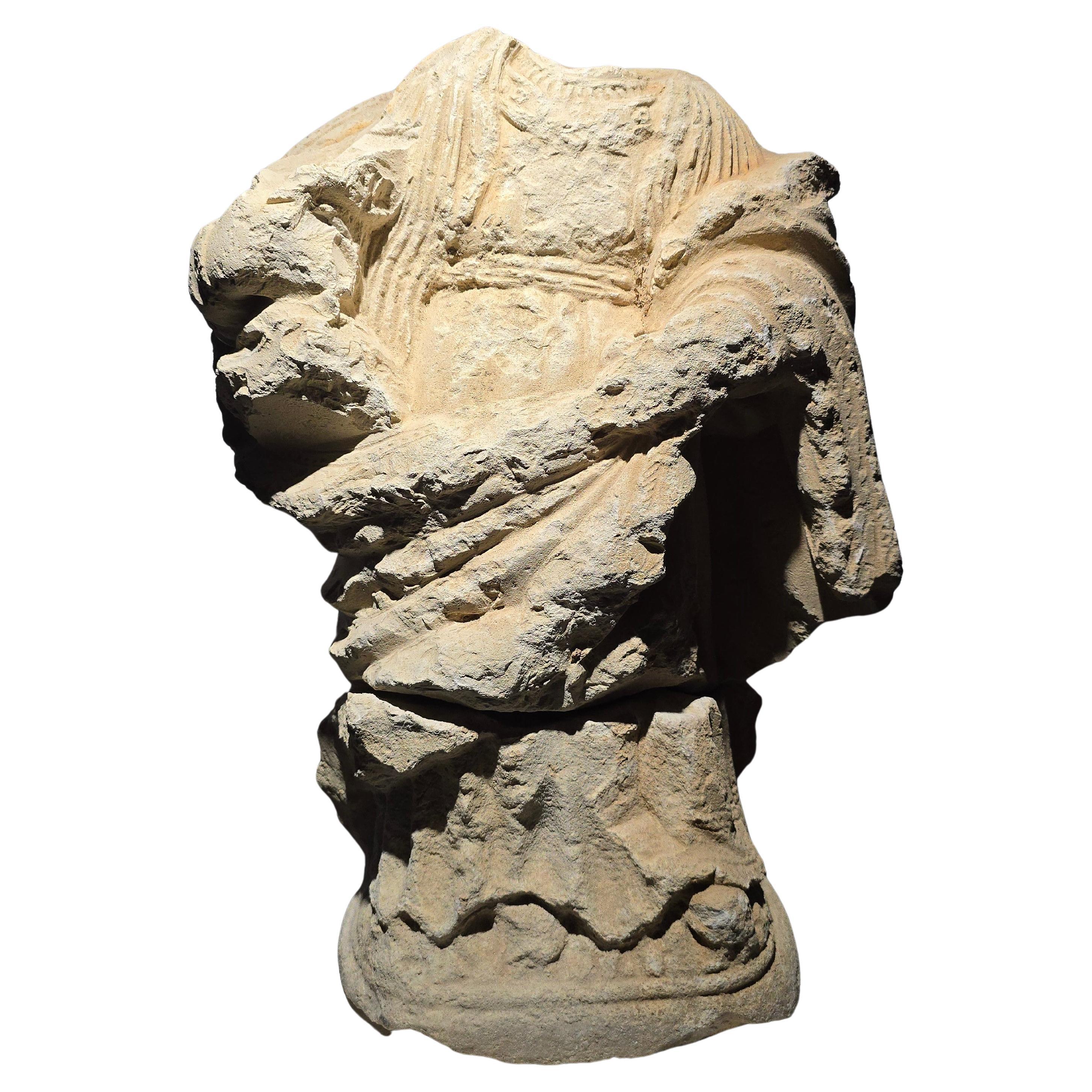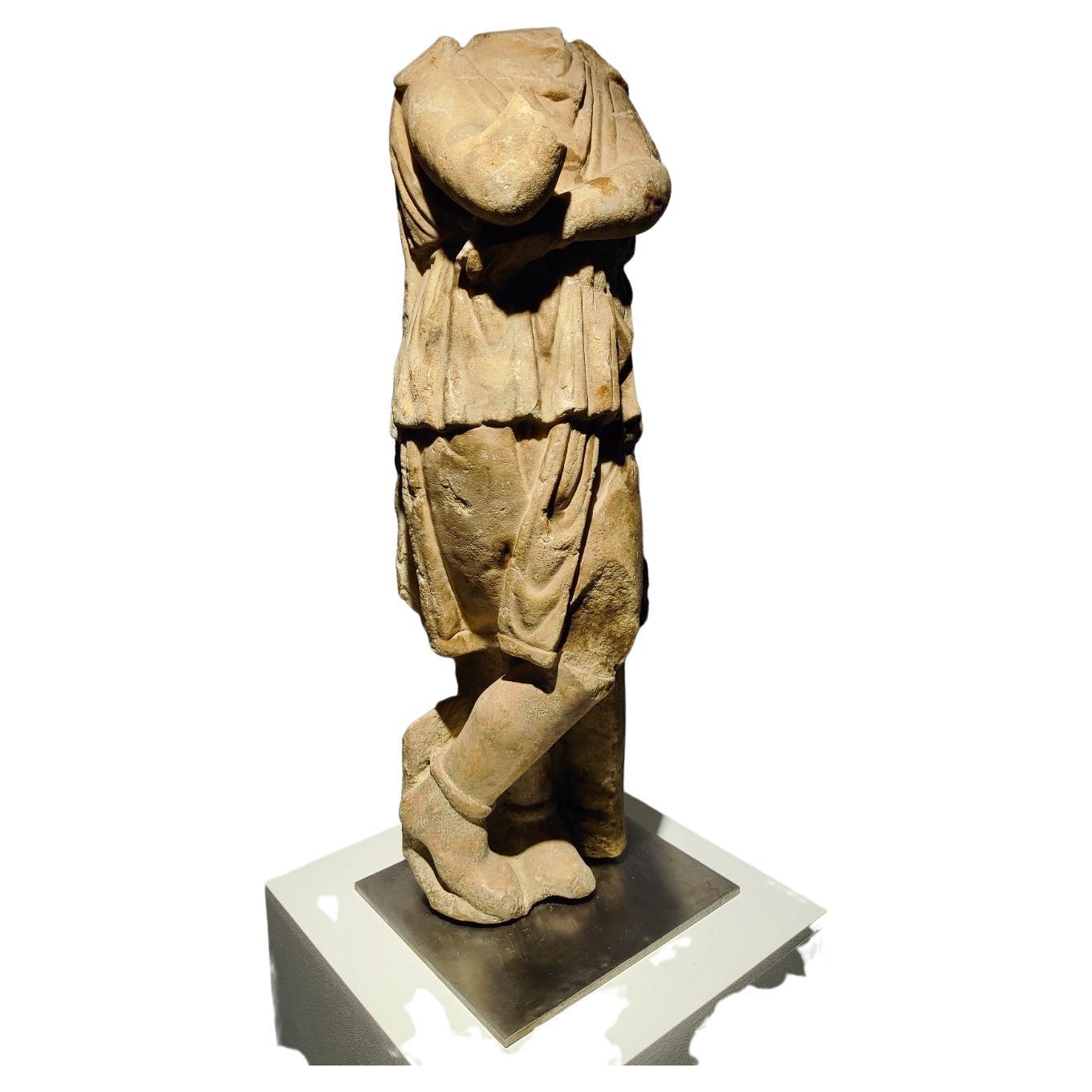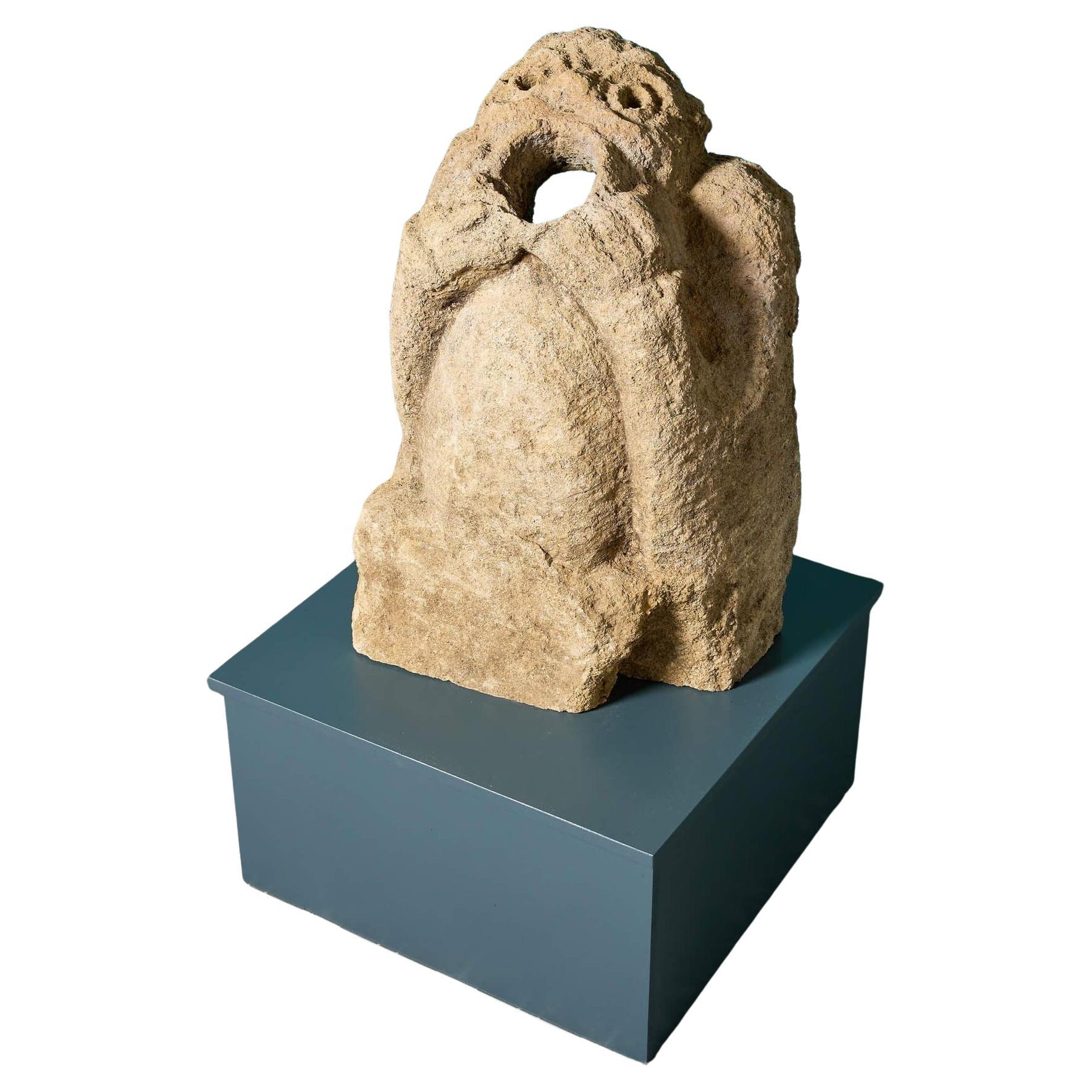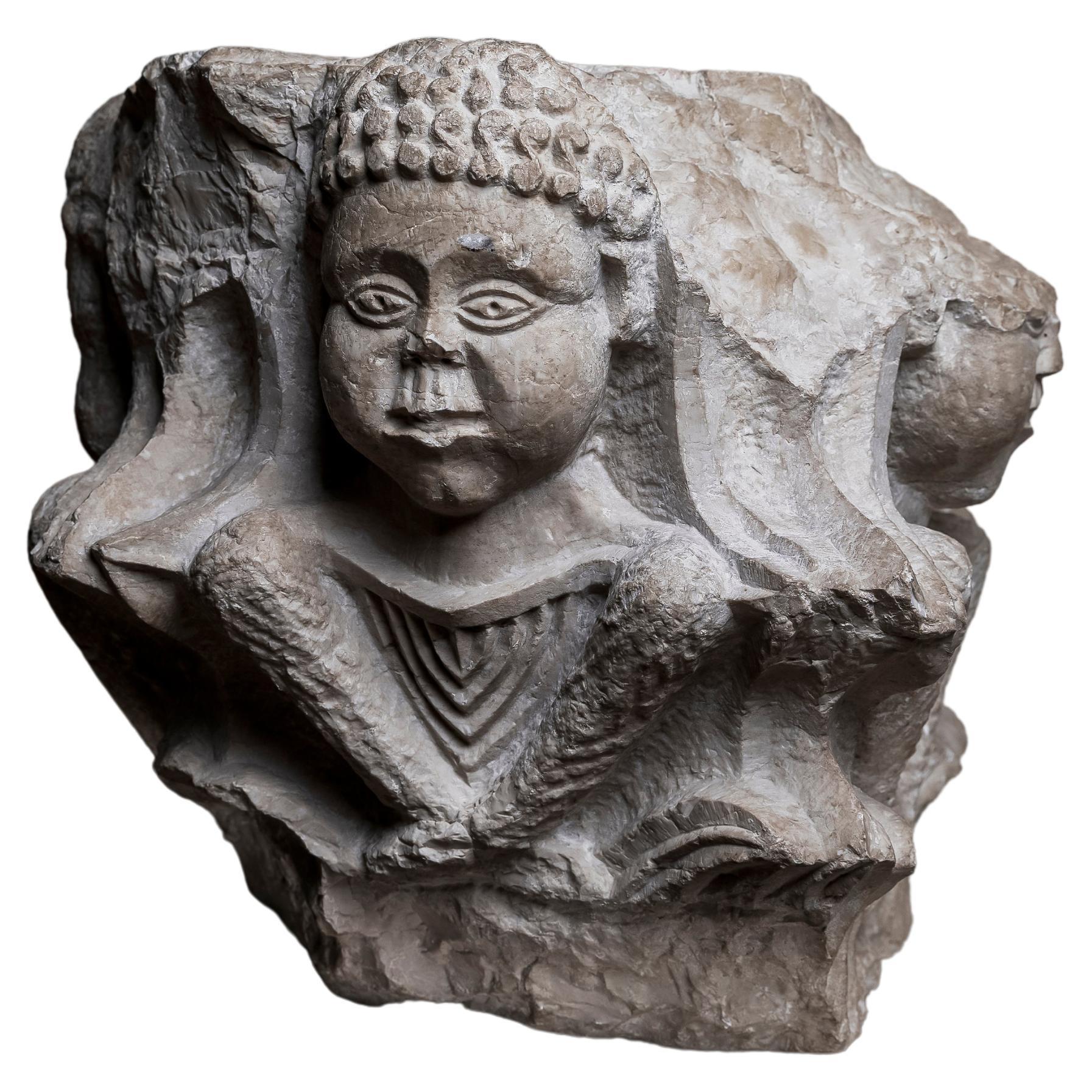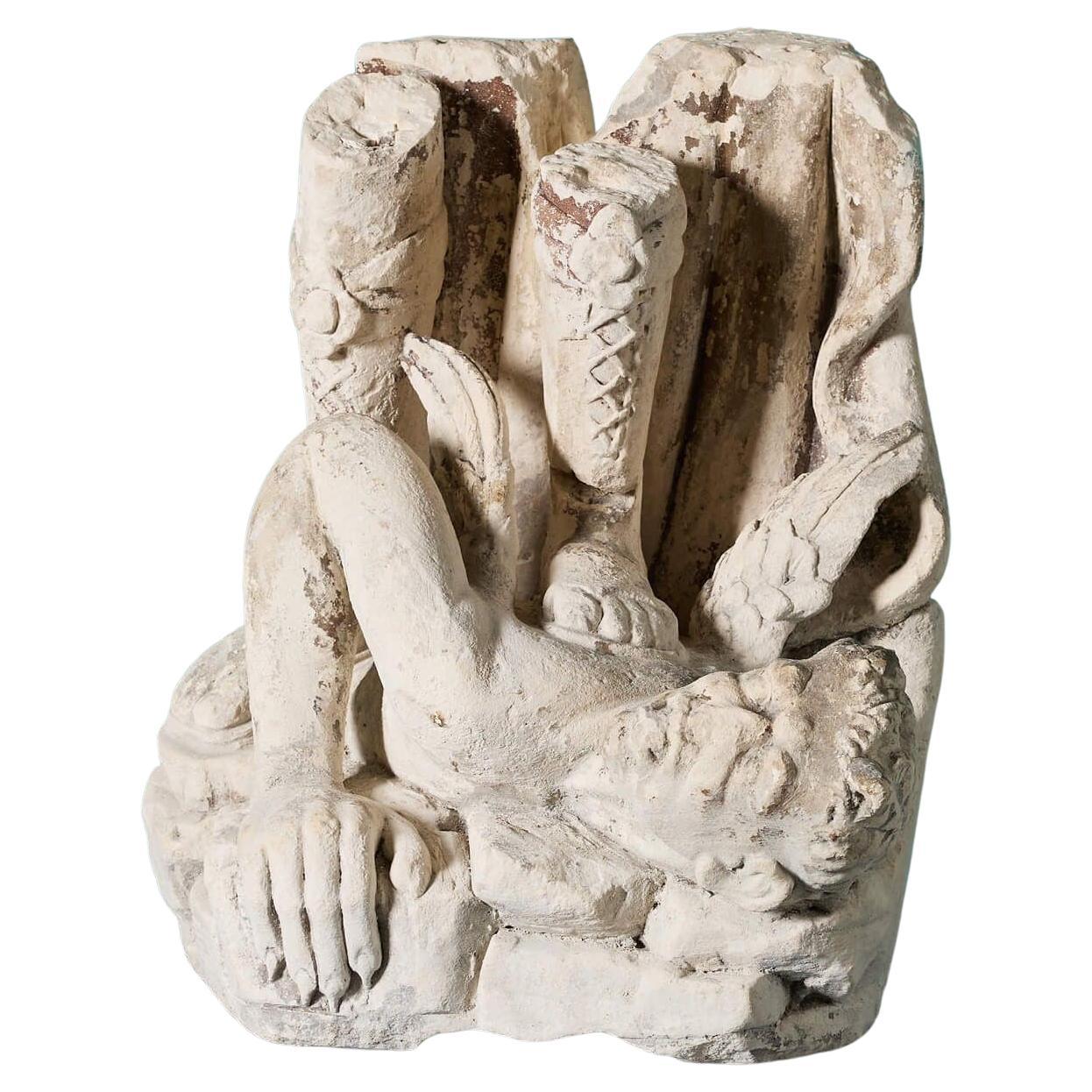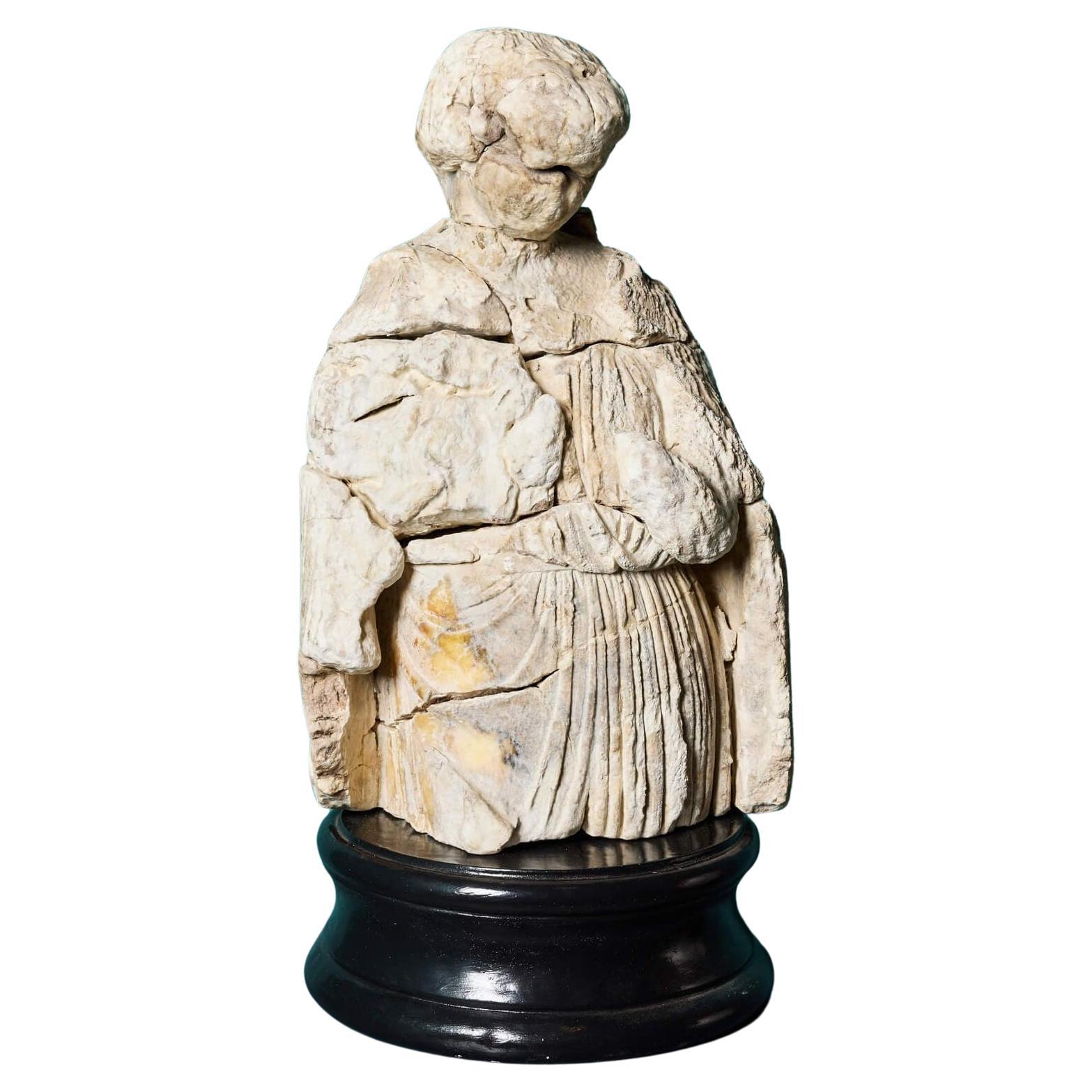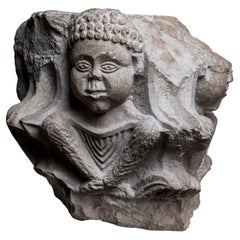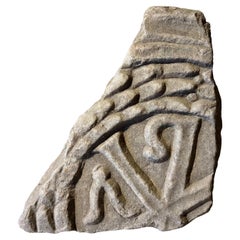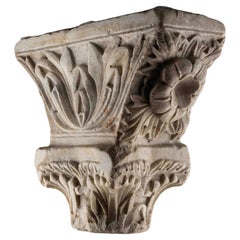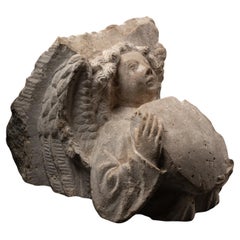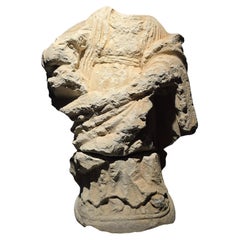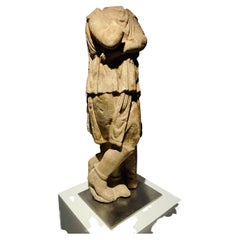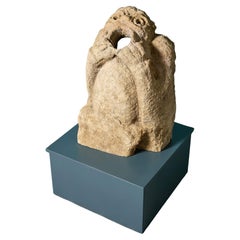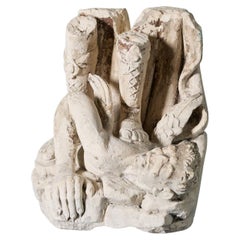Items Similar to Romanesque Telamon - Northern Italy, late 12th (Reemployed Roman marble)
Want more images or videos?
Request additional images or videos from the seller
1 of 8
Romanesque Telamon - Northern Italy, late 12th (Reemployed Roman marble)
$23,962.87
$29,953.5920% Off
£17,835.49
£22,294.3720% Off
€20,000
€25,00020% Off
CA$32,823.14
CA$41,028.9320% Off
A$36,506.50
A$45,633.1320% Off
CHF 19,062.56
CHF 23,828.2020% Off
MX$444,245.28
MX$555,306.6020% Off
NOK 243,457.98
NOK 304,322.4820% Off
SEK 228,320.64
SEK 285,400.8020% Off
DKK 152,253.02
DKK 190,316.2720% Off
Shipping
Retrieving quote...The 1stDibs Promise:
Authenticity Guarantee,
Money-Back Guarantee,
24-Hour Cancellation
About the Item
Telamon
Northern Italy, late 12th - early 13th century
Reemployed Roman marble
H 32 x L 18 x P 17 cm
« Sono coloro che hanno dimenticato che l’uomo é solo un bruco, destinato a diventare farfalla solo nell’aldilà : ora sono curvi come telamoni sotto pesi troppo grandi rispetto alle loro forze, tanto che quello che sembrava poter sopportare di piu il suo carico piangendo parea dicer : Piu non posso.
« Dante, Divina Commedia, I superbi, Purgatory ».
Sitting, crushed under the weight it supports, witnessing eternal punishment, the telamon was an iconic image in the Middle Ages.
I can no more ! Cried the penitents in the purgatory of Dante: the superb in the Divine Comedy are exhausted souls, responsible of their guilt, holding on their shoulders the weight of a heavy boulder as the arrogance perpetrated during a lifetime. The bodies are bent, collapsing on themselves according to an image that Dante compares to the prostrate figure of a telamon.
The title of “Gobbo”(hunchback), derive from his posture, kneeling and hunched under the weight of the marble slab that rests on his head to visualize the weight of the peaches of humanity. Emblematic image of Middle Ages, the hunchback becomes subject of sculpture used as support for columns, plinths and baptismal fonts pulpits and thrones.
This telamon, carved from a block of marble from the Roman period, reemployed as was common in the Middle Ages, bears on the reverse the inscription "SEX".
Is particularly evident the forced posture, with the head squeezed between his shoulders, up to protrude beyond the natural axis of his body.
He wears a tunic tight at the waist by a belt like the telamon kept at the Museo Civico de Piacenza (circa 1110-1130), at the Victoria and Albert Museum in London (1140-1150) and the pair of monumental telamon of the Louvre.
His clothes are typical of the civil fashion of the time: the sculpture witnesses a search for a figurative realism free from the purely symbolic and allegorical repertoire which characterized religious monuments of the time.
Telamon are an architectural innovation that spread in the north of Italy, especially in Emilia Romagna and Lombardy, from the first third of the 12th century and whose fortunes lasted for two centuries. The oldest sculptures representing telamons are those from the Duomo of Cremona dated between 1107 and 1117 (one of which is visible at Castello Sforzesco in Milan).
Often presented in pairs to support the columns of the facades, the gobbi are the sculptural development of an iconographic model which already appears in a series of illustrations visible in a codex from the beginning of the fifth century, "calendario di Filocalo" where a series of images representing the seven planets are inscribed inside a canopy placed on the shoulders of two telamons.
In the well known examples of Bologna, Cremona, Piacenza and Ferrara, the telamons always appear as a couple, a young and an old. This dualism is inspired by the symbolism of the solar circle where the two figures visualize the two parts of the year: the increasing sun and the decreasing sun.
The fortune of this iconographic model lasted until the 14th century when in 1367 Giovanni da Campione was commissioned to realize the facade of the Basilica of Santa Maria Maggiore in Bergamo, probably the last example of telamon produced testifying to the fortune of this iconographic model.
Hunchbacks were a major attraction for passing foreigners and their popularity was highlighted in 1910 by Alice Maude Allen in her book "History of Verona":« The two well known gobbi inside the church supporting holy water basins are masterpieces in their way ».
Bibliography:
A.M.ALLEN, A history of Verona, London 1910, p. 368
S. LOMARTIRE, Telamone, in Matilde di Canossa. Il Papato. L’Impero. Storia, arte, cultura alle origini del romanico, catalogo della mostra (Mantova, casa del Mantegna, 31 agosto-11 gennaio 2009) a cura di R.Salvarani, L. Castelfranchi , Silvana Editoriale, Cinisello Balsamo 2008, pp. 405-406, n. X. 27
E. NAPIONE, i Gobbi di Sant’Anastasia, Museo Civico di Verona, Septembre 2018
P. WILLIAMSON, Catalogue of Romanesque sculpture in the Victoria and Albert Museum, V&A Publications, London 1983, pp. 50-51, n. 22
- Dimensions:Height: 12.6 in (32 cm)Width: 7.09 in (18 cm)Depth: 6.7 in (17 cm)
- Style:Medieval (Of the Period)
- Materials and Techniques:
- Place of Origin:
- Period:
- Date of Manufacture:12th century
- Condition:Wear consistent with age and use.
- Seller Location:Bruxelles, BE
- Reference Number:1stDibs: LU6666239114232
About the Seller
5.0
Vetted Professional Seller
Every seller passes strict standards for authenticity and reliability
1stDibs seller since 2022
15 sales on 1stDibs
Typical response time: 2 hours
- ShippingRetrieving quote...Shipping from: Bruxelles, Belgium
- Return Policy
Authenticity Guarantee
In the unlikely event there’s an issue with an item’s authenticity, contact us within 1 year for a full refund. DetailsMoney-Back Guarantee
If your item is not as described, is damaged in transit, or does not arrive, contact us within 7 days for a full refund. Details24-Hour Cancellation
You have a 24-hour grace period in which to reconsider your purchase, with no questions asked.Vetted Professional Sellers
Our world-class sellers must adhere to strict standards for service and quality, maintaining the integrity of our listings.Price-Match Guarantee
If you find that a seller listed the same item for a lower price elsewhere, we’ll match it.Trusted Global Delivery
Our best-in-class carrier network provides specialized shipping options worldwide, including custom delivery.More From This Seller
View AllRare Romanesque Capital Depicting Four Africans, Apulia, 13th Century
Located in Bruxelles, BE
Large stone capital carved on each side in strong relief. The basket is covered with two crowns of vertical acanthus leaves which sprout from the astragal and fill the space between ...
Category
Antique 15th Century and Earlier Italian Medieval Architectural Elements
Materials
Stone
$22,045 Sale Price
20% Off
Marble Roman relief representing a Christogram
Located in Bruxelles, BE
Marble Roman relief representing a Christogram
Roman relief - 4th century
25 x 22 x 8 cm
Provenance :
Collection of the Château de B. À Nevers by Georges C.S., scholar born in 1833 and deceased in 1909
The entire castle and its collections were acquired in 1938 by the current owners of the estate
A christogram is a monogram or combination of letters that forms an abreviation for the name of Jesus Christ.
This rare fragment combines chi (X) and rho (P), the first two letters of Christ's name in Greek and it is one of the oldest and most popular early christian symbol. The monogram of Christ, or chrismon, is also a powerful symbol of imperial victory: it appeared to Emperor Constantine the Great before his battle against Maxentius in ad 312, promising victory in the name of Christ. In Plato's Timaeus, it is explained that the two bands which form the "world soul" (anima mundi...
Category
Antique 15th Century and Earlier Italian Classical Roman Figurative Scul...
Materials
Marble
$3,517 Sale Price
30% Off
Marble capital carved with acanthus leaves - Apulia, 13th century
Located in Bruxelles, BE
Marble capital carved with acanthus leaves
Southern Italy, Apulia
13th century
28,5 x 53,5 x 12,5 cm
This wedge-shape capital decorated with acanthus leaves and roses is character...
Category
Antique 15th Century and Earlier Italian Medieval Architectural Elements
Materials
Marble
Corbel with an Angel Holding a Shield
- Burgundian Netherlands 15th century
Located in Bruxelles, BE
Corbel with an Angel Holding a Shield
Franco-Flemish, Burgundian Netherlands 15th century
Limestone
On a modern metal stand
H 21 x L 16,5 x P 18,5 cm
This finely carved stone corbel,...
Category
Antique 15th Century and Earlier Belgian Gothic Figurative Sculptures
Materials
Limestone
Roman Lion's Protome - Gallo-Roman, 2nd century AD/3rd century
Located in Bruxelles, BE
Roman Lion's Protome
Sandstone
Gallo-Roman, 2nd century AD - 3rd century
Provenance : Private Collection Prof. Giesen (Konstanz on Bodensee), pré 1945
Most likely from the Chateau a...
Category
Antique 15th Century and Earlier German Classical Roman Animal Sculptures
Materials
Sandstone
Carved Limestone Balustrade, North of France, First Half of the 15th Century
Located in Bruxelles, BE
Carved Limestone balustrade.
In a modern metal frame.
North of France, Ile de France or Normandy.
End of the 14th century - first half of the 15th century.
Measures: 90 x 62 x 8...
Category
Antique 15th Century and Earlier French Medieval Architectural Elements
Materials
Limestone
$14,377 Sale Price
20% Off
You May Also Like
French Gothic Stone Sculpture – 14th Century
Located in Madrid, ES
Possibly a Noblewoman
Elegant stone sculpture from 14th-century Gothic France, possibly representing a noble lady. The bust features finely carved details in the attire, with attent...
Category
Antique 15th Century and Earlier Figurative Sculptures
Materials
Limestone
Roman Marble Trapezophorus circa 1st-2nd Century A.D
Located in Madrid, ES
A Roman marble trapezophorus in the Form of a Barbarian Dacian young figure.
Circa 1st-2nd century A.D.
Measure: height 24 1/4 inches (62 cm).
Property from Mr. Radu Moldovan, Skokie, Illinois
Provenance:
B.C. Holland Gallery...
Category
Antique 15th Century and Earlier Italian Classical Roman Figurative Scul...
Materials
Marble
Medieval 13th Century Carved Stone Gargoyle
Located in Wormelow, Herefordshire
A medieval carved stone gargoyle from the private collection of a country house in Oxfordshire, originally purchased from Crowther of Syon Lodge in 1985.
Dating from the 13th-14th c...
Category
Antique 15th Century and Earlier English Medieval Statues
Materials
Stone
19th Century Fragmentary Stone Statue of an Angel & the Devil
Located in Wormelow, Herefordshire
A 19th century antique stone fragmentary statue depicting an angel standing atop the devil, circa 1800.
Reminiscent of an ancient roman statue, this is a fragment from history – sho...
Category
Antique Early 19th Century English Neoclassical Figurative Sculptures
Materials
Limestone
Medieval English Alabaster Statue
Located in Wormelow, Herefordshire
A medieval English alabaster statue, possibly dating as far back as the late 14th / early 15th century, mounted on one of our exclusive large display plinths. Well weathered over the centuries, this 600-year-old statue depicts a medieval cloaked figure, possibly a monk, offering a glimpse into English architecture and sculpture of the Middle Ages.
This sculpture is possibly made from Nottingham alabaster. During the 14th and 15th centuries, Nottingham was the centre of alabaster carving and painting. Alabaster works were mostly made as small alabaster models with religious themes. During the 16th century Reformation, many alabaster carvings were destroyed under King Henry VIII's rule, making any surviving examples even more significant.
Provenance
From the collection of Peter Hone (b. 1941). A master plaster caster, he is an expert and experienced collector, building up an extraordinary, museum-worthy collection of items in his one-bedroom flat in London W11...
Category
Antique 15th Century and Earlier English Medieval Figurative Sculptures
Materials
Alabaster
Rare English Romanesque Limestone Capital on Stand
Located in Wormelow, Herefordshire
This weathered English Romanesque limestone capital is centuries old, dating from the Norman era of the 11th and 12th centuries. Originating from Oxf...
Category
Antique 15th Century and Earlier English Medieval Mounted Objects
Materials
Stone, Limestone
